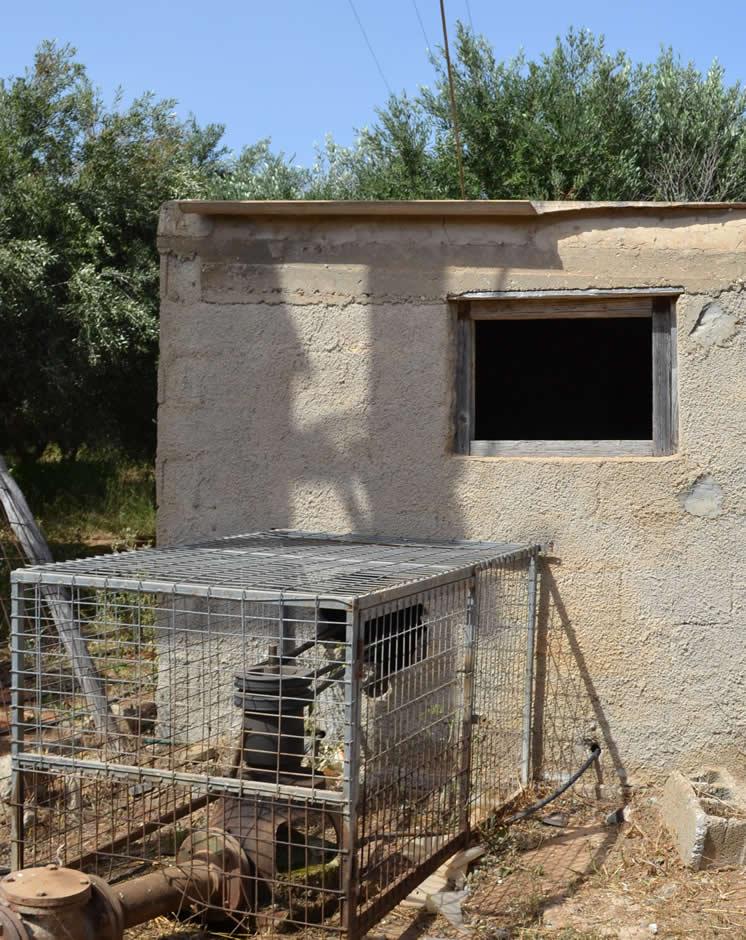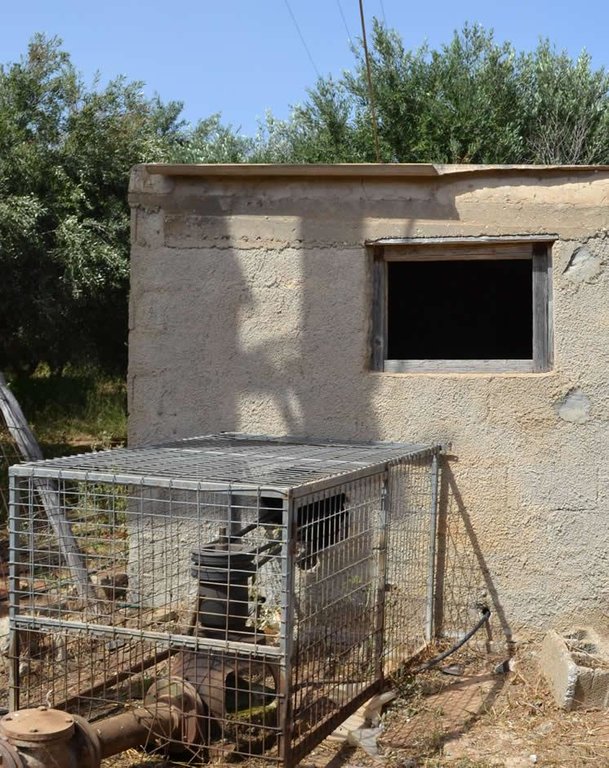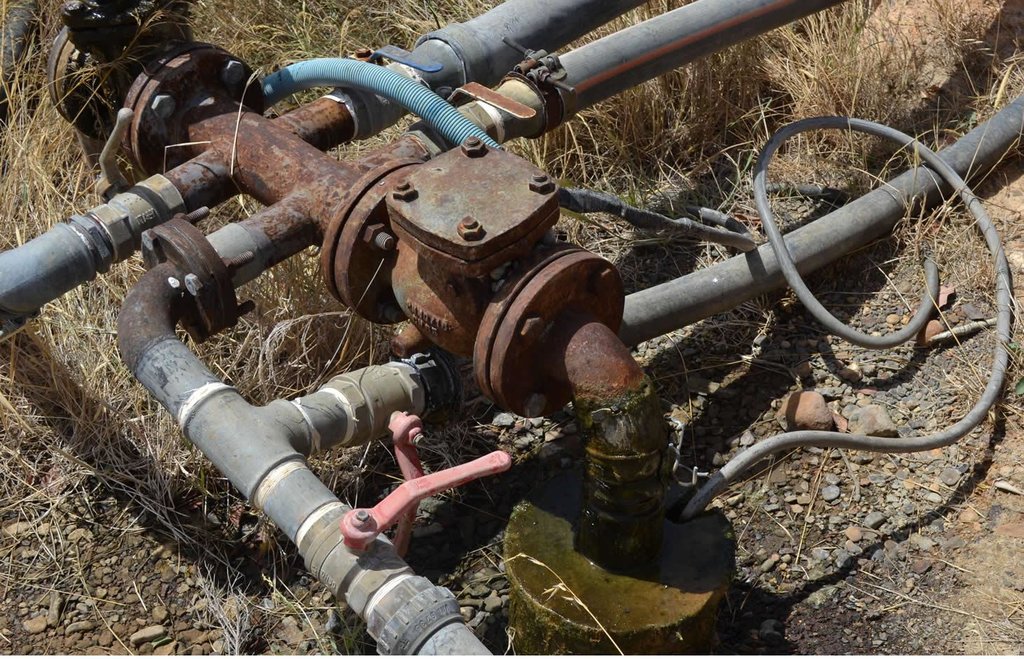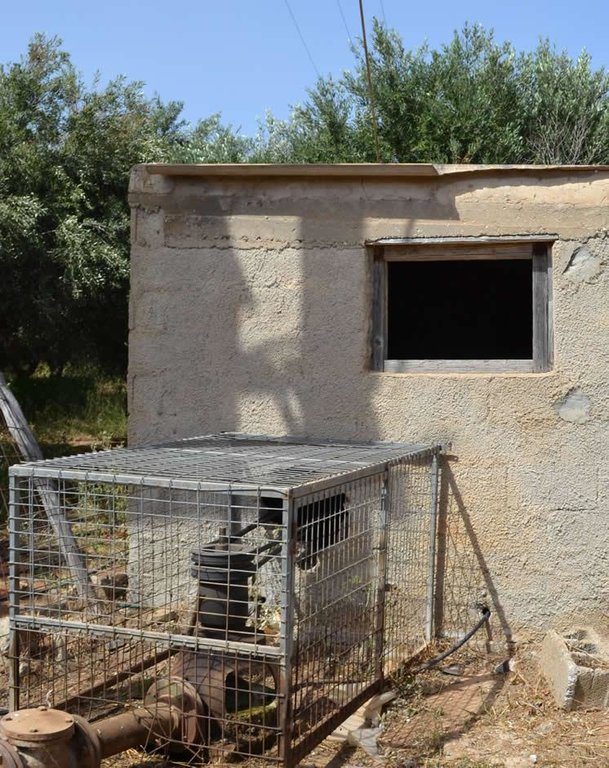Cooperative for Drilling and Exploiting a Private Water Well [Греция]
- Создание:
- Обновить:
- Составитель: Ioannis Daliakopoulos
- Редактор: –
- Рецензент: Fabian Ottiger
Συνεταιρισμός με Σκοπό την Εγκατάσταση και Λειτουργία Ομαδικής Γεώτρηση
approaches_2619 - Греция
Просмотреть разделы
Развернуть все Свернуть все1. Общая информация
1.2 Контактные данные специалистов и организаций, участвующих в описании и оценке Подхода
Специалист по УЗП:
Специалист по УЗП:
Название проекта, содействовавшего документированию/оценке Подхода (если применимо)
Preventing and Remediating degradation of soils in Europe through Land Care (EU-RECARE )Название организации (-ий), содействовавших документированию/оценке Подхода (если применимо)
Technical University of Crete (Technical University of Crete) - Греция1.3 Условия, регламентирующие использование собранных ВОКАТ данных
Когда были собраны данные (на местах)?
13/12/2014
Составитель и ответственный/-ые специалист(-ы) согласны с условиями, регламентирующими использование собранных ВОКАТ данных:
Да
2. Описание Подхода УЗП
2.1 Краткое описание Подхода
A cooperative of land owners and at least one water rights owner established to jointly establish and manage a private freshwater well.
2.2 Подробное описание Подхода
Подробное описание Подхода:
Aims / objectives: The approach is implemented for deep water wells where installation costs are high. It provides an option for land owners to abandon their low quality shallow wells (such as those on coastal aquifers) for a better quality well (e.g. inland) located in a remote property. The objective of the cooperative is to share costs and risk while securing a sustainable water quality for its members.
Methods: A cooperative is formed with interested land users and shares are distributed depending on individual financial contribution to the drilling cost. Additional costs are either apportioned to coop members (e.g. common buffer tank) or managed individually depending on agreement. Apart from actual value, shares also represent the fraction of water rights of each member. Therefore, every member can consume up to their rights fraction or lease from other members who have consumed less that their rights fraction. Water consumption is usually measured indirectly through power consumption at the pump and a common log is kept to split bills power bills when issued.
Stages of implementation: Initially, a land owner secures a well installation permit from the Water Authority. If it is a requirement to form the cooperative as a legal entity then an advocate is requared. The coop elects 5 members to serve as president, treasurer, secretary and alternates. During the installation phase, members of the cooperative share costs according to their agreement. During the operation phase, costs are covered according to user consumption.
Role of stakeholders: The Water Managing Authority needs to provide a permit for the drilling and a geologist needs to oversee and sign for the drilling. Cooperative members need to be timely in their financial obligations in order to cover bills and maintenance costs on time in order to avoid interruptions of the water service for the entire group.
Other important information: This approach was documented within the scope of FP7 RECARE Project, funded grant agreement no 603498.
2.3 Фотографии, иллюстрирующие Подход
2.5 Страна/ регион/ место, где применялся Подход
Страна:
Греция
Административная единица (Район/Область):
Heraklion
Более точная привязка места:
Timpaki
2.6 Даты начала и окончания реализации Подхода
Год начала реализации:
2005
2.7 Тип Подхода
- недавняя местная инициатива/ инновация
2.8 Каковы цели/ задачи Подхода
The Approach focused mainly on other activities than SLM (Securing good quality water at adequate quantities, reduce costs per capita)
The objective of the Approach are to share costs and risk while securing a sustainable water quality for its members. This way land owners have additional options for usign good quality water at an affordable cost.
The SLM Approach addressed the following problems: Lack of cash to invest
2.9 Условия содействующие применению Технологии/ Технологий в рамках Подхода или затрудняющие его
Наличие/ доступность финансовых ресурсов и услуг
- затрудняют
High cost of a good quality (deep) well at a sufficient distance from the sea to prevent saltwater intrusion.
Treatment through the SLM Approach: Group of land users share the cost of drilling and become shareholders of the well. The amount of shares of each shareholder is proportional to the assets invested in the installation.
Нормативно-правовая база (землевладение, права на земле- и водопользование)
- затрудняют
New regulations discourage or ban the installation of new wells in order to regulate the quality and quantity of groundwater in the area. Also selling water without a permit lays at a legally gray area.
Treatment through the SLM Approach: Well shares (representing water rights) can be exchanged or rented among shareholders and sold to new shareholders. Therefore water rights can be distributed without new wells being drilled.
The existing land ownership, land use rights / water rights hindered a little the approach implementation At least one of the members of the cooperative needs to own land and user rights at a location suitable for drilling.
Осведомленность в области УЗП, доступность технической поддержки
- затрудняют
Water wells require an intermediate buffer water tank.
Treatment through the SLM Approach: In the case of a collective installation can be single (rather that each shareholder installing a separate water tank) thus reducing costs due to the economy of scales and saving space.
3. Участие и распределение ролей заинтересованных сторон
3.1 Заинтересованные стороны, участвующие в реализации Подхода и их роли
- местные землепользователи/ местные сообщества
Farmers, agriculturalists
- эксперты по УЗП/ сельскому хозяйству
Water well drilling specialists
- государственные власти (отвечающие за планирование или принятие решений)
Water permits are eventually issued by the Water Authority
3.2 Участие местных землепользователей/ местных сообществ на разных стадиях реализации Подхода
| Участие местных землепользователей/ местных сообществ | Перечислите участников и опишите их вовлеченность | |
|---|---|---|
| инициирование/ мотивация | самоорганизация | Land users forming the cooperative |
| планирование | самоорганизация | The board of the coop adjusts pricing and plans distribution networks in cooperation with the members. |
| выполнение | самоорганизация | Construction work by land users who might have the resources to help. |
| мониторинг/ оценка | самоорганизация | The board monitors water quality, water level and user consumption. |
| Research | нет |
3.4 Принятие решений по выбору Технологии/ Технологий УЗП
Укажите, кто принимал решение по выбору применяемой Технологии/ Технологий:
- в основном землепользователи при поддержке специалистов по УЗП
Поясните:
Land users take the initiative to form an unofficial cooperative or non-profit organization and share expenses to hire a water well drilling rig and specialists.
Decisions on the method of implementing the SLM Technology were made by mainly by SLM specialists with consultation of land users. Specialists will decide on the specifics of the well construction and assign pumping yields.
4. Техническая поддержка, повышение компетенций и управление знаниями
4.1 Повышение компетенций/ обучение
Проводилось ли обучение землепользователей/ других заинтересованных лиц?
Да
Укажите, кто проходил обучение:
- землепользователи
Тип обучения:
- в ходе работы
Рассматриваемые темы:
Use of the pumping system, pricing system, sustainable water use, legal issues.
4.3 Институциональная (организационная) поддержка
В ходе реализации Подхода были ли организованы новые институциональные структуры или поддержаны уже существующие?
- нет
4.4 Мониторинг и оценка
Являются ли мониторинг и оценка частью Подхода?
Да
Комментарии:
bio-physical aspects were monitored by land users through measurements; indicators: water salinity, pH, pollutants, level of the water in the well
economic / production aspects were monitored by land users through observations; indicators: consumption of water/power by each shareholder
There were no changes in the Approach as a result of monitoring and evaluation
There were no changes in the Technology as a result of monitoring and evaluation
5. Финансирование и внешняя материальная поддержка
5.1 Годовой бюджет мероприятий по УЗП в рамках Подхода
Если точный годовой бюжет неизвестен, укажите примерный диапазон затрат:
- < 2000
Комментарий (например, основные источники финансирования/ ключевые доноры):
Approach costs were met by the following donors: local community / land user(s) (Establishing the cooperative as a legal entity): 100.0%
5.2 Финансирование и внешняя материальная поддержка, предоставляемая землепользователям
Предоставлялась ли землепользователям финансовая/ материальная поддержка для применения Технологии /Технологий?
Нет
5.3 Субсидии на отдельные затраты (включая оплату труда)
- нет
Если труд землепользователя был существенным вкладом, укажите, был ли этот вклад:
- добровольный
Комментарии:
Equipment, construction and infrastructure are not part of the actual approach but of the technology facilitated by the approach.
5.4 Кредитование
Предоставлялись ли в рамках Подхода кредиты на мероприятия УЗП?
Нет
6. Анализ влияния и заключительные положения
6.1 Влияние Подхода
Сумел ли Подход помочь землепользователям внедрить и поддерживать технологии УЗП?
- Нет
- Да, немного
- Да, умеренно
- Да, существенно
Сумел ли Подход расширить возможности социально и экономически уязвимых групп?
- Нет
- Да, немного
- Да, умеренно
- Да, существенно
Сумел ли Подход разрешить правовые проблемы землевладения/ землепользования, препятствующие использованию технологий УЗП?
- Нет
- Да, немного
- Да, умеренно
- Да, существенно
Did other land users / projects adopt the Approach?
- Нет
- Да, немного
- Да, умеренно
- Да, существенно
Did the Approach lead to improved livelihoods / human well-being?
- Нет
- Да, немного
- Да, умеренно
- Да, существенно
Did the Approach help to alleviate poverty?
- Нет
- Да, немного
- Да, умеренно
- Да, существенно
The approach provides the means to secure water availability and therefore sustain higher productivity.
6.2 Основные причины, побуждающие землепользователей внедрять УЗП
- рост продуктивности
Production cannot be sustained by relying only on water from the coastal zone
- рост прибыли (доходности) и рентабельности
Other solutions for securing acceptable quality water are less cost-effective
6.3 Долгосрочная устойчивость мероприятий в рамках Подхода
Могут ли землепользователи самостоятельно (без внешней поддержки) продолжать применение того, что было реализовано в рамках Подхода?
- нет уверенности
Если нет или нет уверенности, объясните почему:
While the approach is financially sustainable, it is uncertain whether water resources are managed in a sustainable way, since pumping limits are difficult to implement and are imposed in an empirical way.
6.4 Сильные стороны/ преимущества Подхода
| Сильные стороны/ преимущества/ возможности по мнению землепользователей |
|---|
| Reduces start-up costs for well construction and subsequent risks, allows for deeper wells far from the salt intrusion zone thus providing a more sustainable water quality. |
| Сильные стороны/ преимущества/ возможности по мнению составителя или других ключевых специалистов |
|---|
| Provides the financial means to drill wells far from the salt intrusion zone, thus reducing the risk of enhancing salt intrusion. It is also a indirect way of reducing illegal pumping by consolidating water users to a more easily manageable and accountable entity. (How to sustain/ enhance this strength: Imposing pumping limits so that water use is sustainable. Provide motives to join cooperatives.) |
6.5 Слабые стороны/ недостатки Подхода и пути их преодоления
| Слабые стороны/ недостатки/ риски по мнению составителя или ответственных специалистов | Возможные пути их преодоления/снижения? |
|---|---|
| Once the well has been drilled, water quantities pumped are difficult to control. This can create tension among users but also lead to over-pumping. | A more transparent way of measuring can be implemented (e.g. metering per farm). This of course includes additional costs. Another option is to allow the Water Authority to take control of distribution within the private network and thus impose pumping limits (or at least be aware of the extent of the exploitation). |
7. Справочные материалы и ссылки
7.1 Методы сбора/источники информации
- выезды на места, полевые обследования
- опросы землепользователей
Ссылки и модули
Развернуть все Свернуть всеСсылки
Нет ссылок
Модули
Нет модулей





